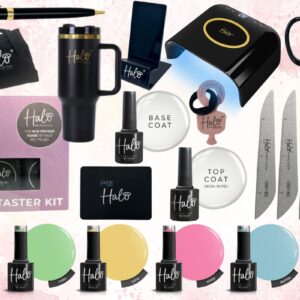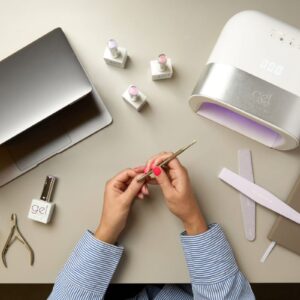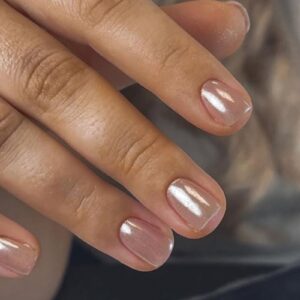
The EU microplastics restriction & what it means for the nail industry
By Rebecca Hitchon | 02 October 2023 | Movers & Shakers, News

The European Commission has adopted measures that restrict the sale of microplastics intentionally added to products, including cosmetics.
Coming into force from 15 October 2023, the change to the EU chemical legislation, REACH, is set to prevent the uncontrolled release of around half a million tonnes of microplastics into the environment.
Once in the environment, microplastics do not biodegrade and cannot be removed. They have been found in animals and humans, who ingest them via food consumption.
The restriction describes microplastics broadly: covering all synthetic polymer particles below 5mm that are organic, insoluble and resist degradation. Products included within this are glitter and cosmetics containing microplastics used for exfoliation (microbeads) and for obtaining a specific texture, fragrance or colour.
From 15 October, the ban will apply immediately to the sale of cosmetics containing microbeads. It is understood that the sale of loose glitters contained within formulas used for on the skin body modifications/enhancements, bath bombs, personal care, hair, make-up and tattoos also fall under the immediate restriction.
The ban will apply after four to 12 years for other cosmetics, depending on the complexity of the product, the need for reformulation and the availability of suitable alternatives.
The regulation specifies a transitional period of 12 years for nail products, until a ban on sale or use comes into force.
This is because products used at ‘industrial sites’, like nail salons, and which contain microplastics but do not release them or their release can be minimised, are not included in the restriction. Cosmetic glitters used within nail services, such as glitter added into solid mixtures or encapsulated within product, prevent the release of loose glitter particles.
Nail Knowledge notes best practices for nail pros to minimise microplastics emissions:
- “Always firmly pat and press glitter into place using a brush.
- “Do not submerge fingers into jars/pots.
- “Do not use a large duster brush to apply glitter.
- “Top coat must be used to encase the glitter finish and any loose glitter used.
- “Should any loose glitter remain on the nail after application, make sure all traces are removed before hands are washed.
- “At the end of the day, those working with glitter should thoroughly shake off their clothes before washing.
- “All generated microplastic waste should be swept/vacuumed, put into an appropriate waste container, and be collected by an authorised waste collection service. Never put waste down a sink or toilet.
- “Nail technicians can mix glitter into a clear gel/varnish/acrylic to almost negate any uncontrolled emissions.”
Nail and beauty brands are also increasingly offering natural and plant-derived alternatives to plastic-based glitter.

Read the latest issue









